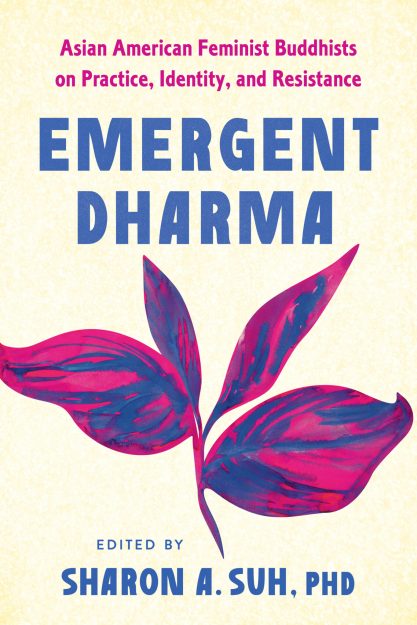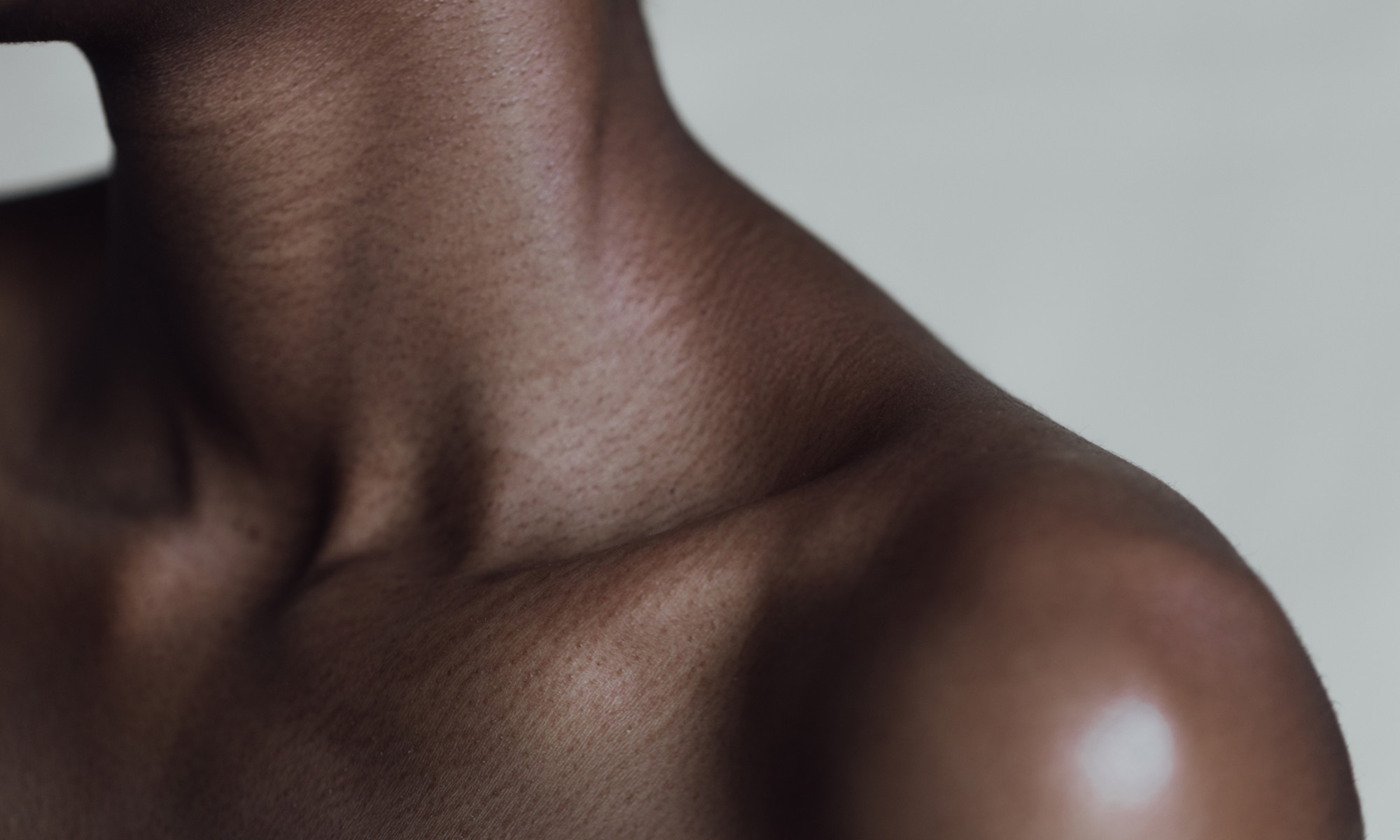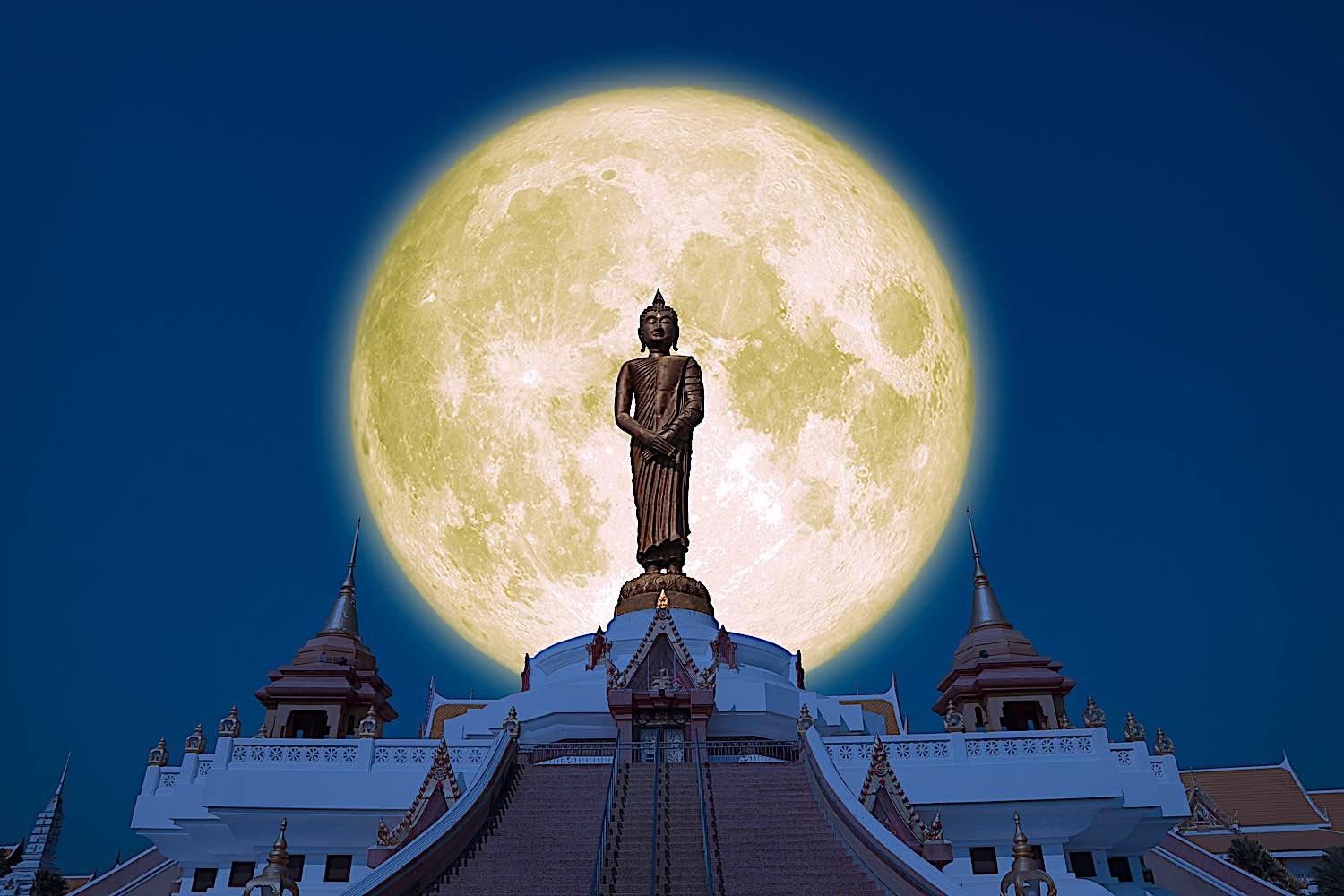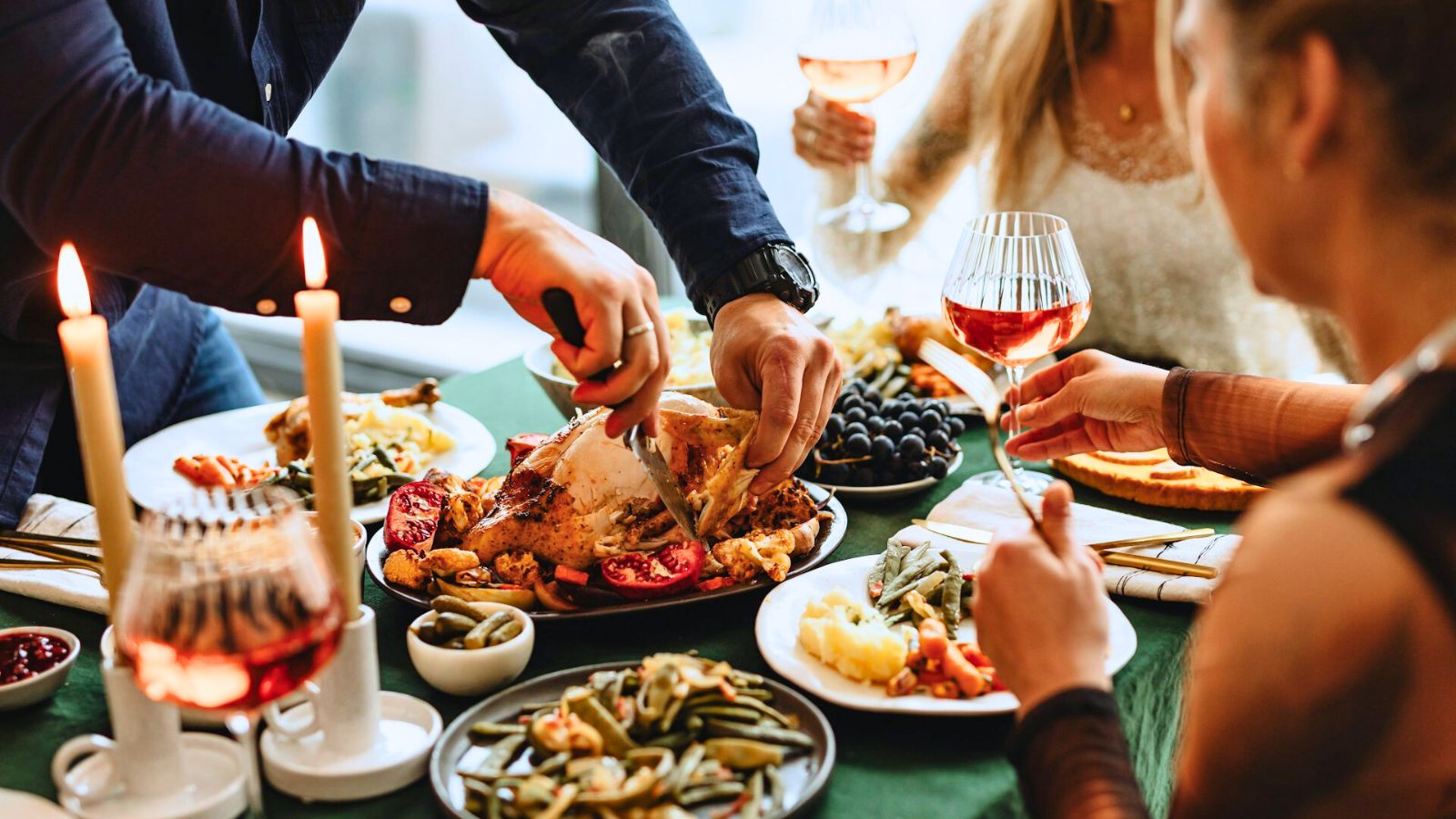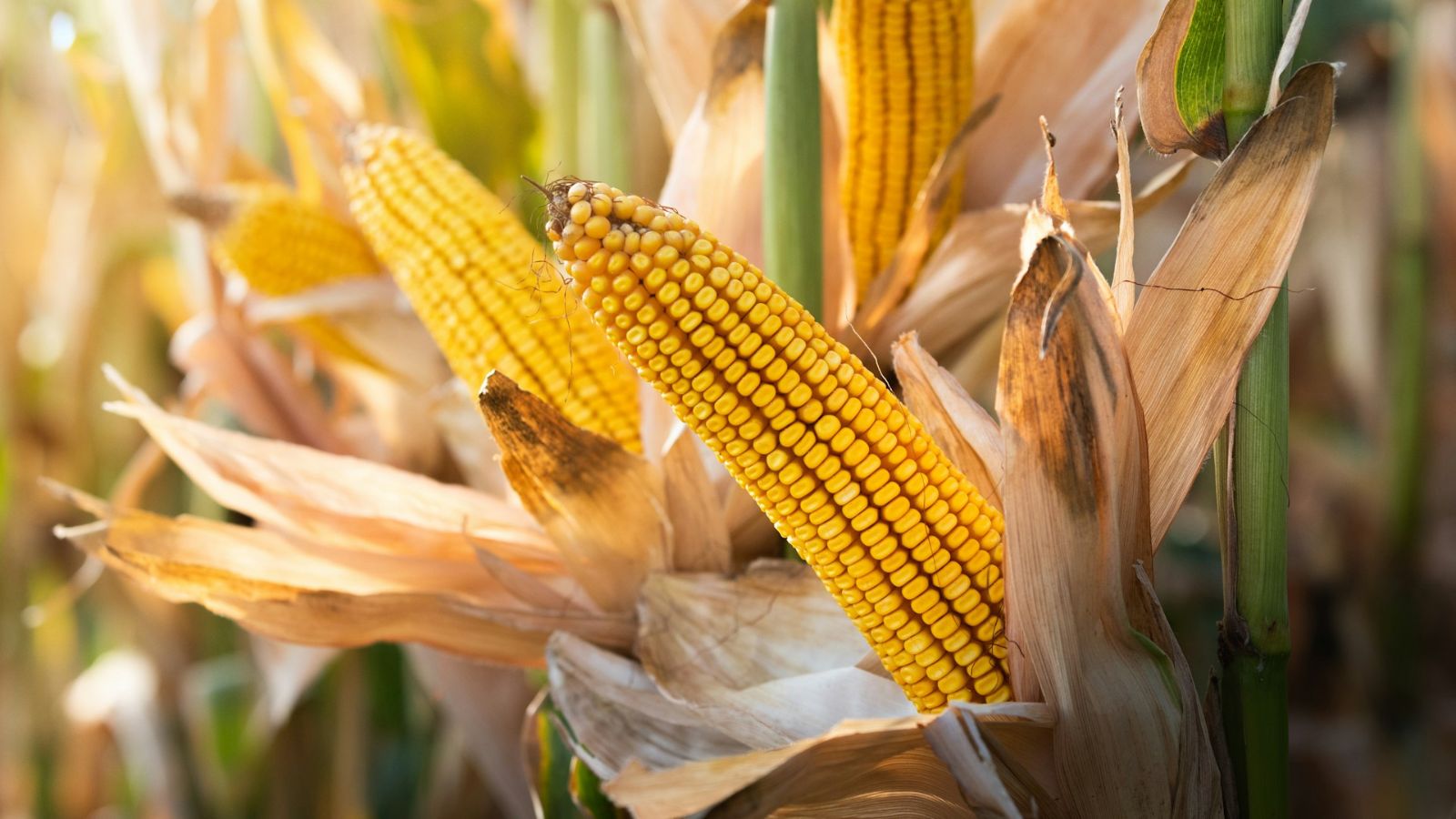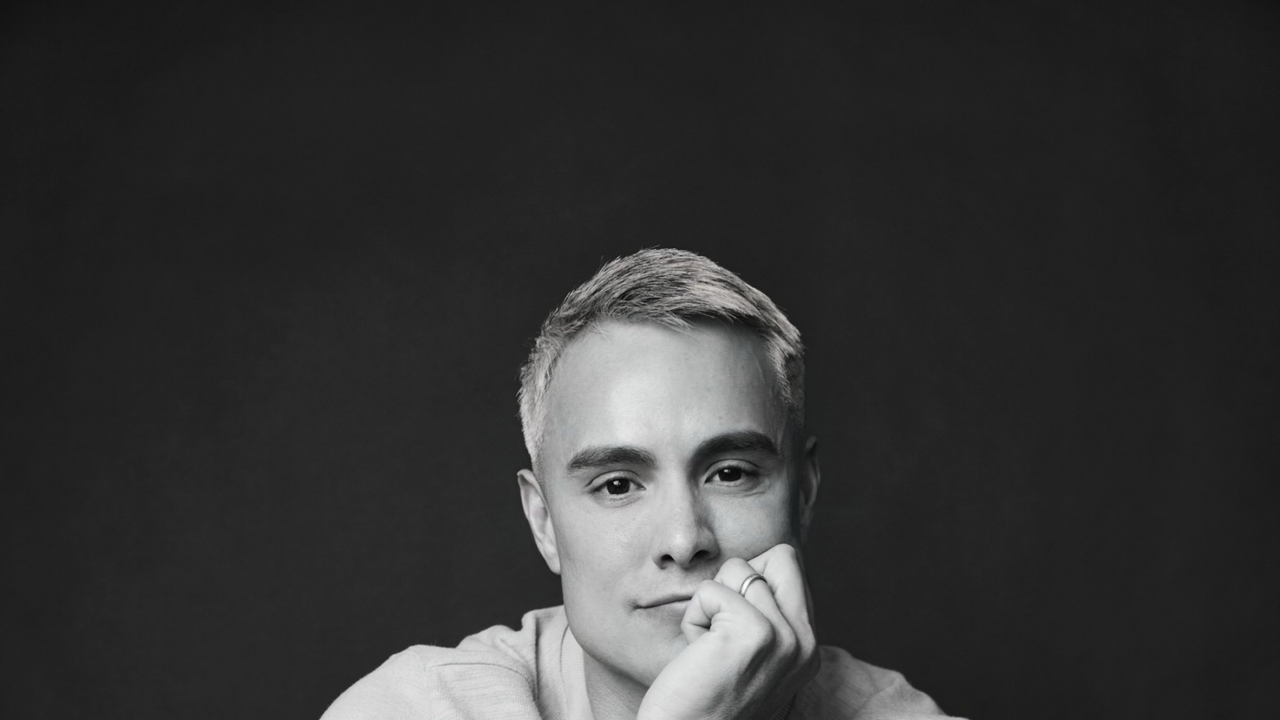Giving Blood, Spilling Blood
A Sri Lankan American scholar-practitioner reckons with the legacies of Sinhalese Buddhist nationalism. The post Giving Blood, Spilling Blood appeared first on Tricycle: The Buddhist Review.

In October 2023, my husband and I arrived at the USC medical hospital at our scheduled appointment for a blood donation. It was our first time donating blood, and we both were eager and certainly a little nervous. But the newsletter from the Keck Hospital of USC announcing a series of local sponsored blood donor events for university staff could not have arrived in my email inbox at a more perfect time.
Yes, donating blood responded to the critical blood shortage the nation faced; the American Red Cross had recently declared a national emergency due to a blood shortage citing the lowest number of people in the United States donating in the last twenty years. While this urgent need was a compelling reason to donate, our motivations were more personal.
For Sri Lankan Buddhists like ourselves, donating blood can hold unique spiritual significance. That first week of October marked two significant dates for us: the fortieth anniversary of my father’s death and my late mother-in-law’s 75th birthday. Many Buddhists believe donating blood is a karmic act that yields merit (pin), which in this instance we dedicated to our departed parents, buoying them in their karmic journey toward ultimate liberation from samsara.
In Sri Lanka and many parts of Asia where Buddhism is practiced, the practice of organ and tissue donations is considered a form of dana. At one level, it is a means through which to cultivate and perfect an ethical disposition of generosity, a cornerstone of Buddhist practice. By giving blood and enacting the practice of letting go, one seeks to break free from the illusion of a separate self. But beyond this more doctrinal interpretation of dana, at a more mundane personal level, for many lay Buddhists, giving blood (leh dan deema) also serves as a means of cultivating and transferring merit to the departed (pin anumodana). For my husband and me, it was an extension of our reciprocal responsibilities to our late parents; a familial duty and an act of care intimately tied to our Buddhist upbringing.
Many converts to Buddhism in the West often struggle with the constellation of “supernatural” ideas around the theory of karma that are so fundamental to the way Buddhists in Sri Lanka and its diaspora navigate their moral lives. Indeed, in some Western meditation-based convert circles, it is not uncommon to hear the term cultural baggage to refer to the ritualized acts, cosmological ideas, and devotional practices of Asian and Asian diaspora Buddhists. In my own engagement with convert Buddhist communities through my research, I have often noted a reticence among Western convert Buddhist communities to take these practices and ideas seriously, with many interlocutors commenting on ideas of karma and rebirth as perhaps being cultural accretions that they believe are incompatible with “true” Buddhism that is consonant with a modern rationalized worldview. As a researcher, I’ve often been struck not only by how such claims of cultural baggage render the spiritual lives and everyday practices of heritage Asian American Buddhists like myself invisible and illegible but also by the underlying conceit of authority to define what constitutes authentic Buddhism.
Yet, it is precisely this constellation of ideas around the theory of karma that have engendered the spiritual life of Buddhists. Although in Western contexts, karma is held up as advancing an ethic of autonomous individualism, for many who were raised in Buddhist cultural contexts, these ideas of karma offer a perspective into the relational and intersubjective dimension of our lived experiences. For example, one of my earliest childhood memories is of a pirit ceremony held in our home upon the passing of my father. Buddhist monks were invited to chant Pali sutta verses and tie white protective strings around our wrists. Like dana, Buddhists believe that chanting pirit cultivates good karma or merit that can create favorable conditions for one’s own and one’s loved one’s samsaric journey. It is an enactment of this Buddhist worldview that posits social and personal relationships as intertwined in karmic entanglements, connecting individuals across past, present, and future cosmic distances. Now, decades later at USC, I hoped and believed that transferring merit on behalf of my father at his fortieth death anniversary through a secular blood donation event would have similar karmic efficacy.
At the clinic, the latex band bit into my arm, and I felt a tight cold pressure. As I watched the nurse expertly insert the needle and my gaze drifted to the blood bag slowly beginning to fill, my mind drifted to 1999 and a memory of my first attempt to donate blood when I was 18 years old in Colombo, Sri Lanka.
It was the summer before I was to return to the United States for my first year in college, having spent nearly my entire childhood in Sri Lanka. Though I was born in Virginia, after my father’s sudden death at 44, my young widowed mother decided to return to Sri Lanka to raise my two sisters and me among the safety and support of her homeland. At this time, my sisters were 14 and 12 and I was two and a half. So when I first attempted to donate blood, it was at a Buddhist temple in Colombo against the backdrop of the civil war that had been raging since we arrived in Sri Lanka in 1983.
Throughout the 1980s and 1990s the demand for blood was high as a result of the war in the north of the country with the Liberation Tigers of Tamil Eelam (LTTE). For the Sinhalese majority government, the LTTE’s demand for a separate homeland, or Eelam, for Tamils in the northern and eastern regions of Sri Lanka constituted a threat to its sovereignty and territorial integrity. For the majority Sinhalese, who have viewed Sri Lanka as the dhammadipa—the island (dipa) of the Buddha’s teachings (dhamma)—a sacred Buddhist space meant to be secured by the Sinhalese as the “chosen race,” the LTTE demand for an independent Eelam impinged on their nationalist sensibilities. It was against this backdrop of Sinhalese Buddhist nationalism that Buddhist clergy made their appeals to the Sinhalese for blood to help treat soldiers injured on the battlefield or civilians injured by bomb blasts, and their appeals for blood donations resonated strongly with the Sinhalese Buddhist nationalist consciousness.
As a researcher, I’ve often been struck not only by how such claims of cultural baggage render the spiritual lives and everyday practices of heritage Asian American Buddhists like myself invisible and illegible but also by the underlying conceit of authority to define what constitutes authentic Buddhism.
Many Sinhalese, including those from affluent middle-class families like mine, volunteered in large numbers at the time. Buddhist institutions, from civic organizations to monastic establishments, were significant sources of support for the blood drive campaigns, often framing their appeals in Buddhist terms. For example, a popular narrative positioned military service as a form of dana, and rhetoricians would often describe military servicemen as committing the selfless sacrifice of aes, his, mas, leh (eyes, head, flesh, and blood). In Theravada Buddhism, these bodily organs denote a special category of meritorious giving referred to as dana paramita that is rooted in Buddhist folklore (of the extraordinary bodily sacrifices made by the Buddha in previous lives as recorded in Jataka tales). By connecting the military defense of national sovereignty to the righteousness of dana paramita, rhetoricians were able to appeal to the public to donate blood to soldiers as a form of reciprocal support for the cause of protecting Sinhalese sovereignty. Ideas of blood donation as a form of national service merged in this way with more traditional appeals to the meritorious nature of giving.
Alas, my body weight as a young teenage girl was just shy of the weight requirement to donate blood and I was turned away. Nearly twenty-five years later, as I sat there at the USC hospital in Los Angeles having my blood drawn for the first time in the memory of my late father, I could not help but wince in recalling this memory—at my own participation in these everyday forms of Sinhalese Buddhist nationalist consciousness that fueled a bloody war and that have continued to uphold Sinhalese Buddhist hegemony in Sri Lanka.
Momentum is growing within the Asian American Buddhist diaspora to make known and to amplify the contributions and significance of heritage Buddhists, namely Buddhists whose Asian ancestral and cultural heritages have historically preserved Buddhism. This call to honor heritage Buddhists is particularly significant as Asian American Buddhists face the experiences of racism, erasure, and cultural appropriation that endure in a culture of white dominance.
Yet, at the same time, the violence and everyday racial oppressions that Sinhalese Buddhists have dealt in the name of preserving Buddhism in Sri Lanka gives me pause in embracing my own heritage Buddhist identity. In fact, I have had to spend a good deal of my adult life deconstructing my Buddhist identity and heritage, especially as it has been defined within the constraints of the Sinhalese Buddhist nationalist consciousness that I was immersed in as a Sinhalese girl growing up in Sri Lanka. Because I find that the dominant Sinhalese Buddhist racial consciousness leaves almost no Sri Lankan Buddhist community space, even in the diaspora, really free of its specter, I admittedly have often felt reluctant to actively engage in these cultural spaces. I’ve certainly witnessed how, in the name of preserving Buddhist heritage, the racist rhetoric of Sinhalese nationalism has sometimes been even more amplified and bellicose in the Sri Lankan American diaspora than in Sri Lanka itself.
Yet, my embodied experiences as a heritage Buddhist woman with transnational ties to Sri Lanka and the United States, combined with my scholarly training, have also provided me with unique insights into the diverse local meanings that animate the spiritual life of Sinhalese Buddhists that challenge static views of Asian and Asian American Buddhism.
I
’m seated in the meditation hall on the second day of a five-day meditation retreat at an Insight meditation center in the northeastern United States. This retreat is a historic moment for the local community, addressing the growing need for more accessible spaces for communities of color beyond its predominantly white demographics.
As I look around the room at my fellow retreatants, a diverse group of practitioners from various parts of the country guided by two women of color, I can’t help but feel a sense of belonging. One of the teachers guides the group in the first “sit” of the day, inviting us to turn our attention to the present moment, to the embodied experience of the self, and to observe the sensation of breathing. Our collective silence and focused breathing invite a stillness of mind and body.
My reason for being here is to experience this momentous occasion firsthand as part of my ethnographic research on the institutional efforts of North American Buddhist convert communities to respond to the institutional whiteness prevalent in Insight meditation communities. While meditation isn’t a regular practice for me and I rarely have a disciplined meditation practice outside of retreats I attend for participant-observation, I nonetheless have an intimate familiarity with it.
I have a vivid memory of my young mother sitting on the veranda of our Sri Lankan home, headphones on and a Walkman in her lap, meditating. She had started this practice shortly after my father’s sudden death in Virginia Beach. She was engrossed in cassette tapes by Bhante Rahula, a North American Theravada monk based at the Bhavana Society in West Virginia. A few years prior, she had received these recorded guided instructions on vipassana during a visit to the society’s founder, the Sri Lankan monk Bhante Henepola Gunaratana, whom my family knew through the tight-knit Sri Lankan diaspora in Virginia. I remember the large, white binder holding a dozen or so of these cassettes as one of her most cherished possessions.
Amid her profound grief and despair as a young mother navigating a transcontinental move, selling a home, and caring for her daughters, the guided vipassana meditations provided her with a lifeline, grounding her in the present and nurturing joy and resilience. As a Buddhist, my mother believed that karma—my deceased father’s, hers, and ours—were the conditions of his untimely demise. However, she found solace in the Buddhist principles of suffering (dukkha) and impermanence (anicca) cultivated in the practice of vipassana that helped her accept his death and find strength to persevere through her grief.
Later, when I was around 7 years old, I also learned anapanasati bhavana (meditation) at the Buddhist girls school I attended early on in my schooling in Sri Lanka. Poya days, lunar monthly holidays commemorating the Buddha’s life, were often dedicated in school to taking sil (ethical precepts) and meditating. Unlike in the US, where mindfulness meditation is taught for secular purposes, Sri Lankan Buddhist schools introduce bhavana for spiritual formation. Despite our otherworldly aspirations, I vividly recall my white uniform dress sticking to my skin in the sweltering humidity. The pungent odor of a room full of sweaty schoolgirls filled my nostrils with each meditative breath.
Buddhist girls schools like the one I attended were a direct legacy of the broader Buddhist revivalist movement that unfolded in the early 20th century in the face of growing aspirations for independence from colonial rule. A significant aspect of this movement was the emphasis placed on lay people undertaking high-level spiritual pursuits once reserved for spiritually advanced monks, alongside formalized training in studying Buddhism and the Sinhalese language. Along with religious formation, including meditating and learning to recite numerous Pali gathas and the Buddhist Jatakas, the school curriculum I recall emphasized a particular framing of Buddhist mytho-historiography—one centered on the ethnoreligious exceptionalism of Sinhalese Buddhists.
Scholars of Buddhism have characterized these transformations as laicization and part of the broader process of Buddhist modernism that unfolded in South and Southeast Asia during colonial modernity, where North American and European Theosophists played a pivotal role in establishing educational institutions like the one I attended. Musaeus College, the girls Buddhist school that I attended, bore the names of its Western Buddhist-Theosophical founders: Marie Musaeus Higgins, a German educationist who served as the founding principal along with Peter De Abrew, a Sri Lankan philanthropist. The school houses were named after prominent figures associated with the Theosophical Society’s work in Sri Lanka—Henry Steel Olcott, an American co-founder of the society; Annie Besant, an English supporter of independence movements; and Higgins. Their framed portraits hung on the assembly hall walls. As a young girl, during those long Poya observances in the assembly hall, I would often find myself distractedly glancing during meditation practice at the founders’ portraits. I was puzzled by this incongruity. What did these white figures have to do with a school so invested in Buddhism? My confusion deepened when a teacher revealed that one of the founders, Colonel Olcott, was, like myself, an American.
The presumption of Theosophists like Colonel Henry Olcott was that the Buddhist laity of Sri Lanka were ignorant of their own tradition and felt it their white savior prerogative to provide middle-class Sinhalese youth with a knowledge of Buddhism through education. The Buddhism they introduced in school was thus a rationalized one, shorn of traditional Sinhalese Buddhist engagement with deities and spirits, and one decidedly oriented toward a Buddhism distilled down to its philosophical and ethical premises. Teaching children to meditate at an early age was part of their vision of a Buddhist religious formation.
Yet, despite the aspirations of Theosophists and their native coconspirators like the Buddhist revivalist Anagarika Dharmapala, a thriving Buddhist heterodoxy exists in Sri Lanka, defying reformist attempts to rationalize traditional Sinhalese Buddhist practices.
Indeed, one of my childhood memories involves sitting with my mother and two teenage sisters in a small, dimly lit shrine at a Buddhist temple dedicated to Kataragama Deviyo, the guardian deity of Sri Lanka. Our visits to the temple happened around the same time my mother began practicing meditation, soon after we left Virginia. I recall the air was thick with the fragrant scent of burning incense as we participated in a private pooja seeking blessings. Adorned with colorful flowers and flickering oil lamps, the shrine, nestled within the grounds of a prominent Buddhist temple, was a place of both reverence and mystery. A bare-chested priest solemnly recited Vedic verses while gently fanning us with peacock feathers, a symbol of the deity’s divine power in the syncretic blend of Buddhist and Hindu beliefs.
While the Buddhist modernist versions of Sinhalese Buddhism emphasize a purist interpretation of the Theravada tradition shorn of non-Buddhist rituals and popular “superstition,” to this day popular Sinhalese practice incorporates a diverse pantheon of deities and spirits—including Kataragama, Pattani, Vishnu, Ganesh, Lakshmi, Shiva, and Kali—who are revered as protectors offering worldly assistance to help devotees navigate themselves through the vicissitudes of samsara. Hence, even as the Buddha remains the central figure in this syncretic tradition, with Maitreya holding a prominent place as the future Buddha, Sinhalese Buddhists often turn to divine intervention of this pantheon of local gods to offer external support, personal empowerment, and inner strength to address life’s hardships.
In my mother’s case, her turn to Kataragama at this juncture in her life was to buoy us through her rebuilding of a life in Sri Lanka as a widow while raising two teenage daughters and a young child. Later as a graduate student at UC Irvine, when I called my mother, who was living at the time in Sri Lanka, to share my fears about finishing my doctoral degree, she turned to Ganesha, the god of letters and learning, offering a pooja in his honor to favor me in my educational pursuits.
When my mother remarried, my stepfather’s personal shrine in his office room at home exemplified the multi-religiosity and religious syncretism of Buddhists in Sri Lanka. Alongside the statue of the Buddha at the center of the shrine, it also featured a statue of Ganesh, an image of Vishnu, a photograph of the South Indian guru Sathya Sai Baba (an image my mother brought back from her pilgrimage to the Sathya Sai Baba ashram where she witnessed his miracles), and even a statue of Saint Jude; the latter two were his own adaptation into the traditional pantheon of Hindu and Indigenous gods, but their significance was no less. On road trips outside of Colombo, my stepfather would invariably stop at the Church of St. Jude and have us leave a candle at his shrine.
Over the years, the syncretic practices of Sinhalese Buddhism in my own home waxed and waned, often influenced by periodic waves of Buddhist reform on the island. Similar to the early 20th-century reform movement led by figures like Anagarika Dharmapala and Henry Olcott, who proffered Buddhism as a “rational religion” that centered on the individual and his or her own nirvanic salvation and viewed Christians and non-Sinhalese as outside aliens, the turn of the 21st century in Sri Lanka saw the rise of charismatic Buddhist nationalist monks who advocated for a “pure” Buddhism. These reformers frequently criticized popular religious syncretism in the media, contrasting it with the Buddha’s original “true” teachings. Their rhetoric constructed an idealized vision of Sinhalese Buddhism, positioning it against perceived external threats from the idolatry and superstitions of religious others, including Hindus, Christians, and Muslims. Likewise, they posed the popular “idolatry” of Sinhalese Buddhists (such as my own family’s) as internal threats to the tradition. Indeed, for Sinhalese to practice forms of Buddhism beyond their essentialized rationalized version was construed as a perversion and therefore a betrayal of one’s religion itself.
These life experiences as a transnational diaspora Asian Buddhist have had an undeniable impact on the critical affinity stance I take toward the study of contemporary Buddhism. For instance, the irony is not lost on me when, in my current research on race and whiteness in North American Buddhism, Buddhist convert practitioners of color describe to me the resistance they face from white spiritual leadership on engaging issues of identity and race through a Buddhist framework, particularly claiming that their approach is one of “watering down the pure dharma teachings.” I am particularly struck by such rebuttals, for I find the rhetorical resistance they encounter similar to that of Buddhist reformers in Sri Lanka who critique popular forms of devotional Buddhism in favor of the “pure teaching of the Buddha.” I am intrigued by how both reformist formulations of contemporary Sinhalese Buddhism and the dominant expression of meditation-based convert Buddhism share a common historical legacy in the project of Buddhist modernism.
By embracing the lived experiences and critical perspectives of Asian and Asian American scholars, we can further expand the boundaries of what it means to engage with Buddhism both intellectually and personally.
Thus, when we in the Western academy of Buddhist studies debate the merits of using conceptual categories like Buddhist modernism to describe cultural history shifts to describe the development of contemporary forms of Buddhism, the intellectual conversation is not one I can honestly enter with critical distance. As a transnational diaspora Buddhist, Buddhist modernism might even be considered my cultural baggage. Yet, a sketch of my own biographical itinerary as a scholar-practitioner of lived Buddhism has also demonstrated, I hope, how a paradigm like Buddhist modernism is relevant to understanding how the project of modernity has shaped the social environment of Sinhalese Buddhism, while it has also highlighted the paradigm’s limitations in explaining the lived forms of Buddhism that unfold. Put another way, a concept like Buddhist modernism is dominant but does not determine the diversity of embodied perspectives that contemporary Buddhists inhabit.
While the concept of the scholar-practitioner in Buddhist studies offers a profound rethinking of the relationship between academic scholarship and personal practice, it also needs to be expanded. By embracing the lived experiences and critical perspectives of Asian and Asian American scholars, we can further expand the boundaries of what it means to engage with Buddhism both intellectually and personally. My journey as a Sri Lankan American woman, deeply rooted in Sinhalese Buddhist culture and shaped by transnational experiences, exemplifies the unique contributions that scholar-practitioners can make. My critical affinity toward Buddhism is informed by both my academic pursuits and my embodied life experiences. This dual engagement challenges essentialist notions of Buddhist identity and highlights the complex interplay between heritage, colonial history, and contemporary practice. Ultimately, recognizing the value of scholar-practitioners, especially those who are Asian and Asian American, enriches our understanding of Buddhism and fosters a more inclusive and nuanced approach to its study by incorporating critical perspectives rooted in lived experiences.
♦
Adapted from Emergent Dharma: Asian American Feminist Buddhists on Practice, Identity, and Resistance by Sharon A. Suh, published by North Atlantic Books, copyright © 2025 by Sharon A. Suh. Reprinted by permission of North Atlantic Books.

 Kass
Kass 